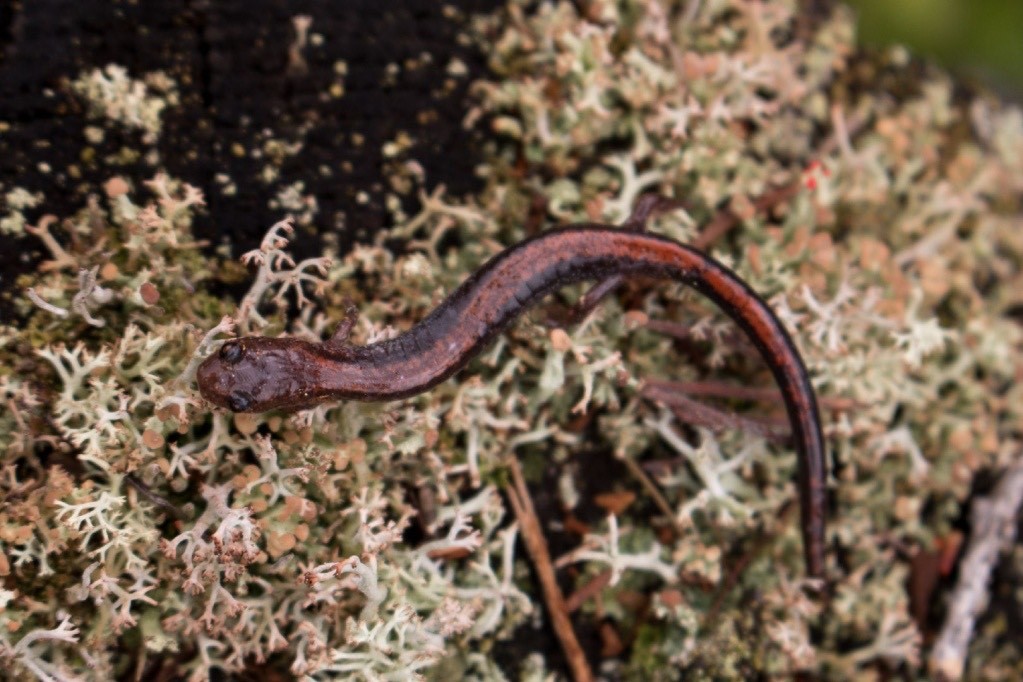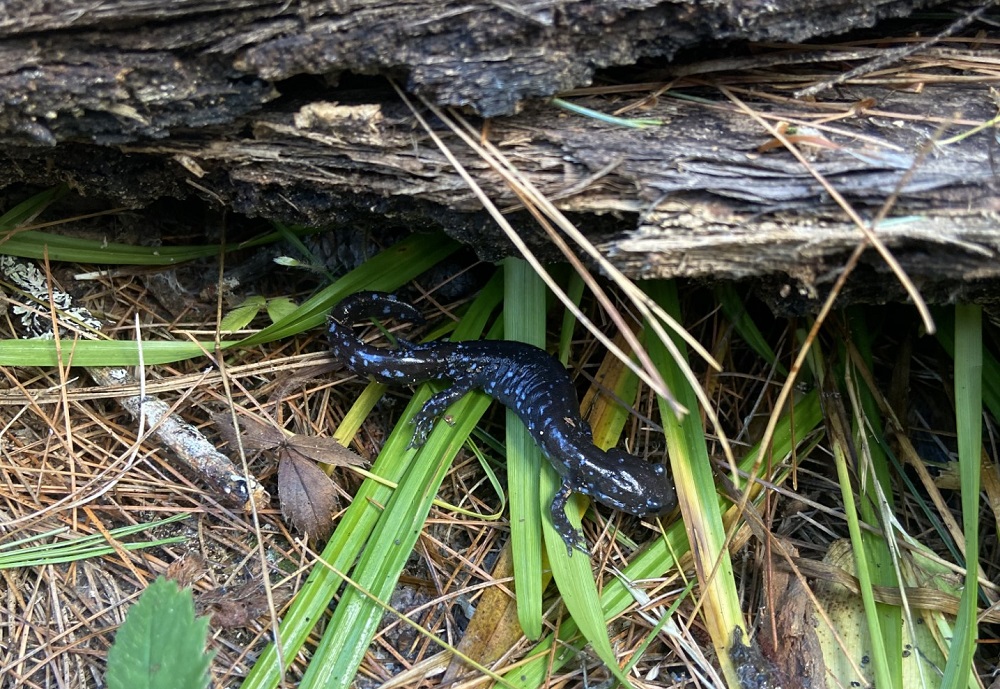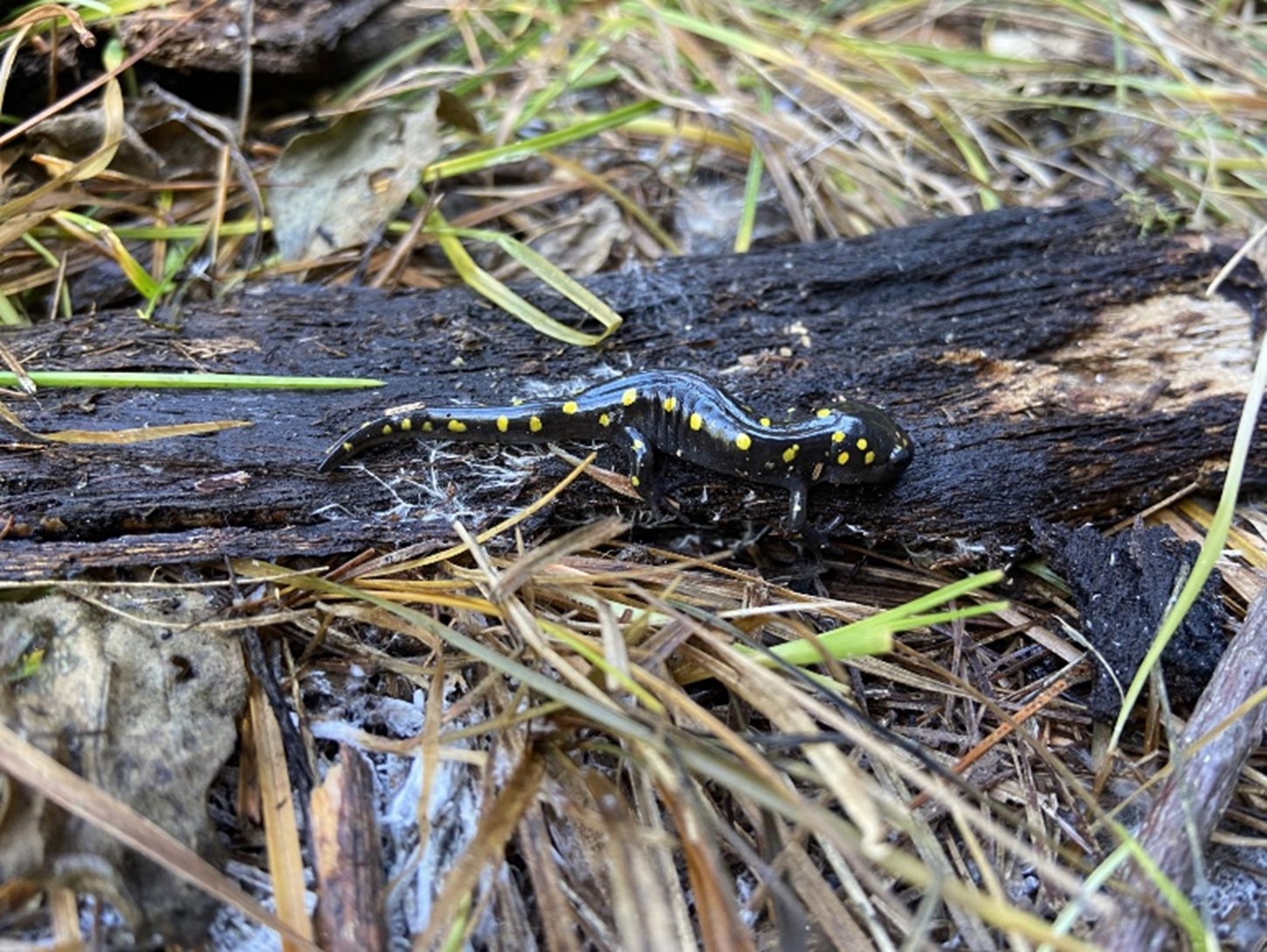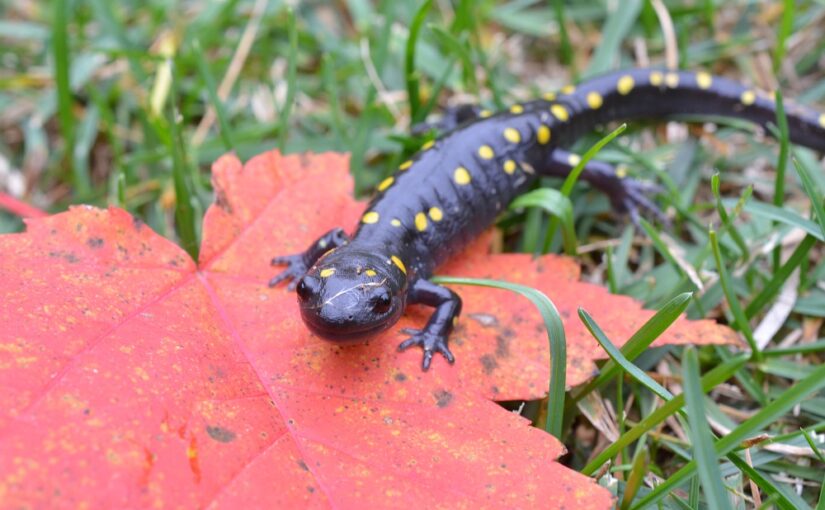Today’s post comes from Jazmin Gall, park naturalist at Samuel de Champlain Provincial Park.
As park staff, one of our favorite questions to get from visitors is, “Where do insert various wildlife names live within the park?”
We love visitors who are as excited as we are about wildlife and we’re more than happy to share the knowledge we’ve gained!
In today’s blog, we’re going to teach you about the somewhat secret sites that salamanders like to call home.
Shy but stunning
Salamanders are lizard-like amphibians that come in a variety of shapes, sizes, and colors. Like frogs, most spend the first part of their life in water and the remaining part on land.

In the southern half of Ontario, we have over eight different species, ranging from the sizable Mudpuppy, which reaches the same size as your forearm, to the Eastern Red-backed Salamander, which maxes out at the length of your index finger.
With brilliant colour combos, including deep blacks, blues, fiery reds, and yellows, spotting any salamander is always a treat!
Unfortunately, many visitors haven’t had the pleasure of seeing a salamander in the wild before!

This creature isn’t one to make its presence known, unlike birds with their songs or moose with their size.
They are small and quiet animals that usually require some active searching if you’re hoping to see one.
Staying cool
Much like ourselves, salamanders prefer making their homes in areas where all their necessities are close — food, water, and shelter.
Since salamanders are amphibians and breathe through their skin, staying in a cool, moist environment is a must. And for their food, they enjoy eating insects, worms, and slugs.

Although you may find salamanders at any time of year when there isn’t snow on the ground, the best times of the year to look for them is in the spring or fall.
Winter is too chilly for these cold-blooded creatures to stay above the frost line, and summer can be too hot and dry for their moisture-dependent skin.
Salamander sleuthing
Salamander spotting can be fun and easy, and even slightly addicting!
But before you start your search, please remember to admire with your eyes and not with your hands.

The absorbent skin of salamanders is highly sensitive to chemicals that we may put on ourselves, like insect repellant and sunscreen.
They are also quite delicate and could be harmed if they become spooked and try to run or jump out of your hands.
Start your salamander spotting!
There is nothing as rewarding as seeing a sightly little salamander (or two) in nature!
Next time you’re walking along a trail, take a good look at the forest floor.
You might be surprised by what’s living at our feet!
